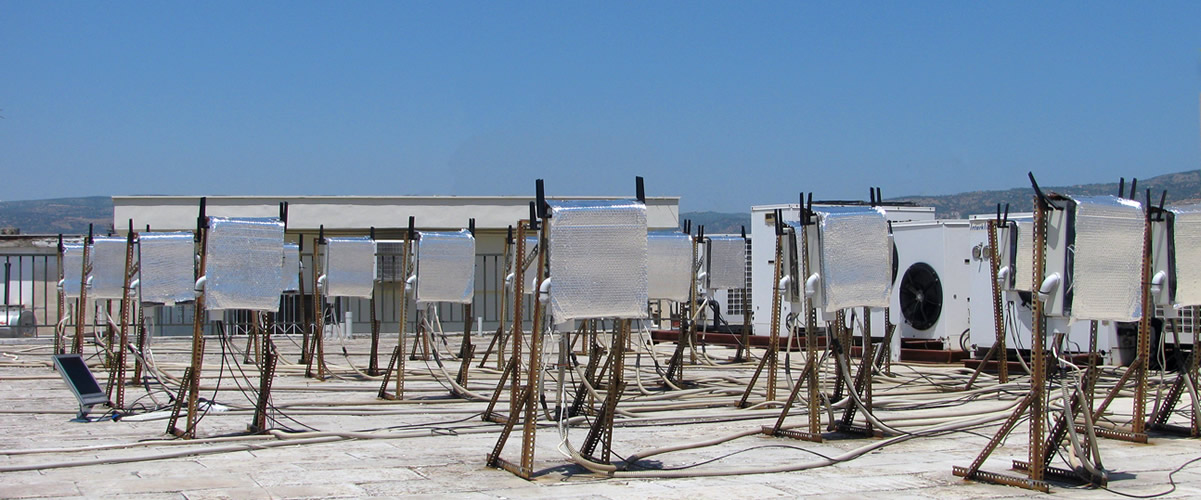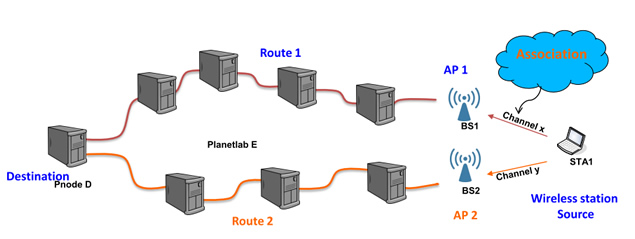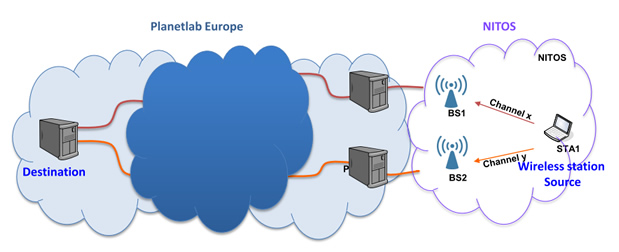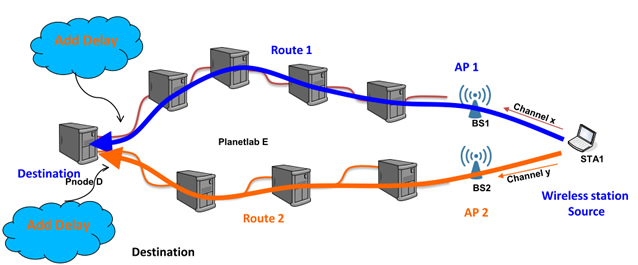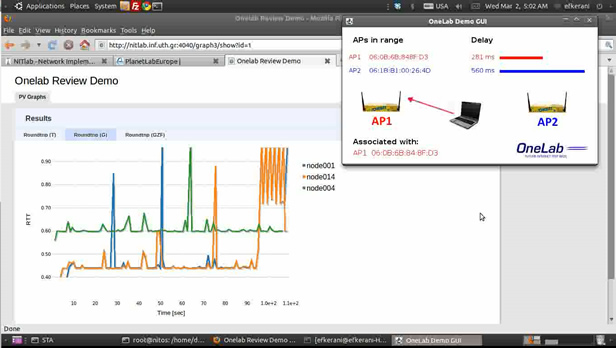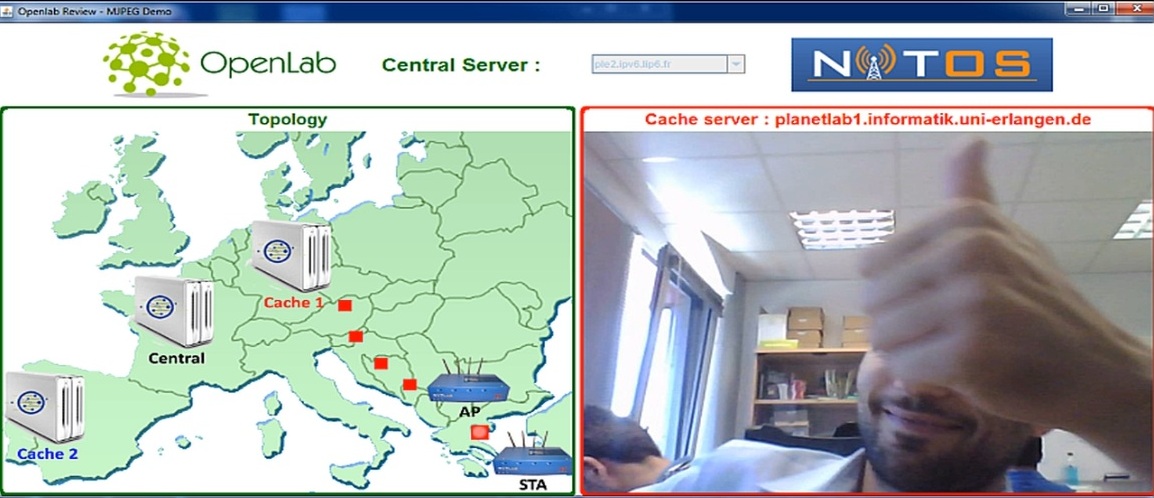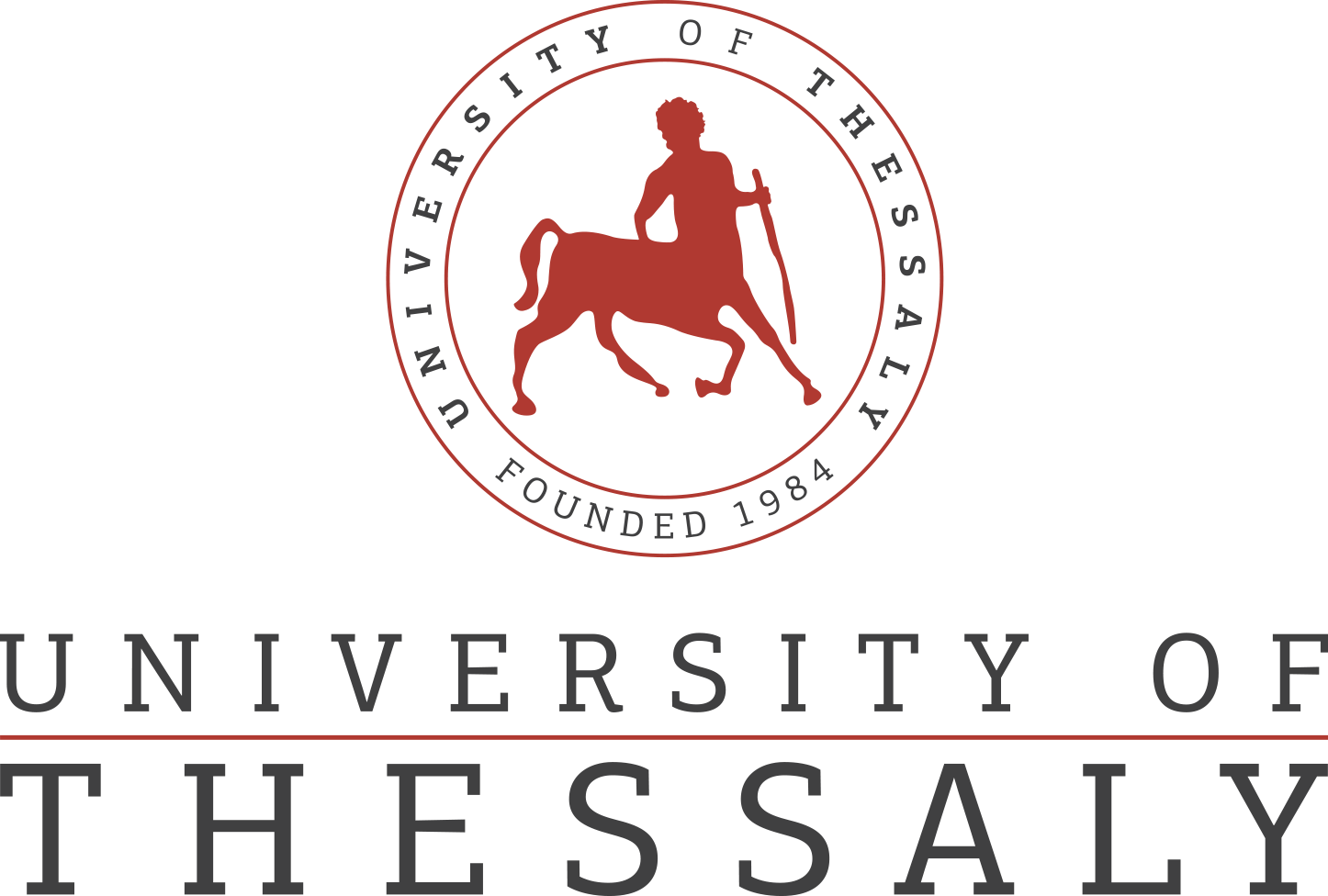OpenFlow-Wireless Federation with Brazilian Islands
Content Centric Networks (CCNs) have become of major importance lately, due to their novelty of service provisioning relieved from addressing schemes. However, most of the approaches so far perform content mapping to network addresses based on complex Domain Name Service (DNS) system setups. In this demo, our experimental setup alters the regular operation of the Address Resolution Protocol (ARP) and manages to provide different load balancing techniques in the allocation of content requests to servers, by exploiting OpenFlow (OF) resources. Our platform is evaluated under real conditions, using the federated infrastructure of three different FIBRE testbeds,
spanning the two continents of Europe and Brazil.
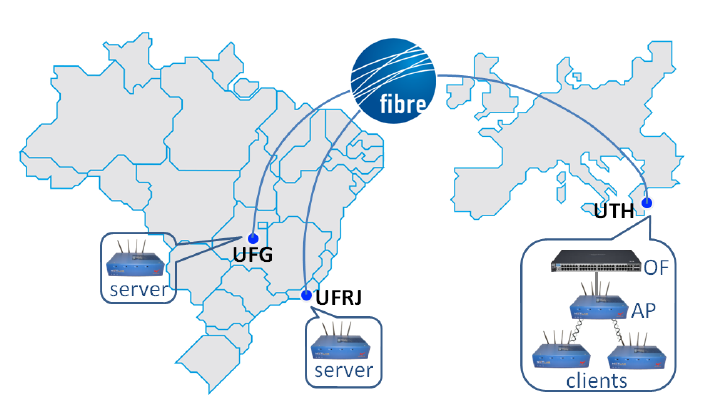
Figure 1(a)
For the purposes of this demo, resources from three wireless facilities are exploited, the Brazilian testbeds of Universidade Federal de Goias (UFG) and Universidade Federal do Rio de Janeiro (UFRJ), and the European NITOS testbed of University of Thessaly (UTH). NITOS testbed features two OF switches, one of which will be used to intercept the ARP traffic.
The three testbeds are configured in one VPN network, supporting Ethernet-Bridging, thus placing the resources under one single virtual LAN, as depicted in Fig. 1(a). The three islands are already federated using the cOntrol and Management Framework, named OMF. The basic building blocks of OMF are the Experiment Controller (EC) and the Resource Controller (RC). During an experiment, the user interacts with an EC instance, which orchestrates the behavior of the experiment resources, on which RCs are running. A measurement software framework closely related to OMF, named OMF Measurement Library (OML), is being used to handle experiment measurements at NITOS.
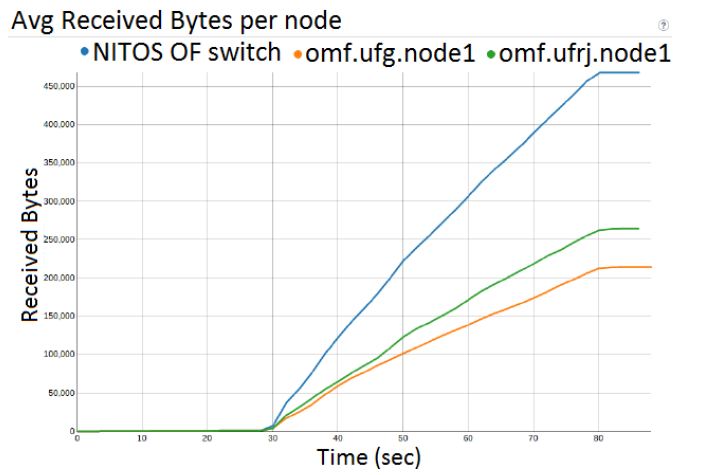 Figure 1(b)
Figure 1(b)
We will be using multiple nodes from the UFG and UFRJ testbeds, that would on pairs provide different services, emulating a scenario for server redundancy in a Cloud Computing system. All the content servers offering the same service would have the same IP address. If a server should offer more than one service, the server will be using multiple IP addresses using virtual subinterfaces. Multiple nodes from the NITOS testbed will be acting as the clients requesting content from the servers. All the nodes are configured with an IP address from the same local IP network. When the first client requests the service providing the corresponding URL, it retrieves the shared IP address, which should be translated to a MAC one initiating an ARP request.
The OF switch propagates normally this ARP request, while on the receipt of the multiple ARP replies, it selects and forwards only one of them, using a round-robin way. In Fig. 1(b) we present some measurements from our proposed setup, that have been aggregated using the OML framework. We have measured the number of the total bytes transferred to each server, and the total bytes that have been passing through the OF switch. As one can deduce from the figure, total traffic that passes by the switch is almost equally divided between the two available content servers.
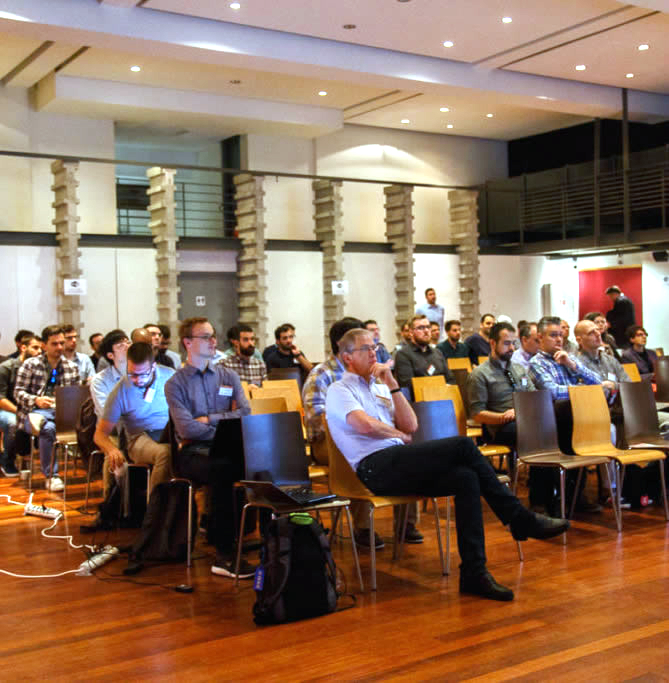
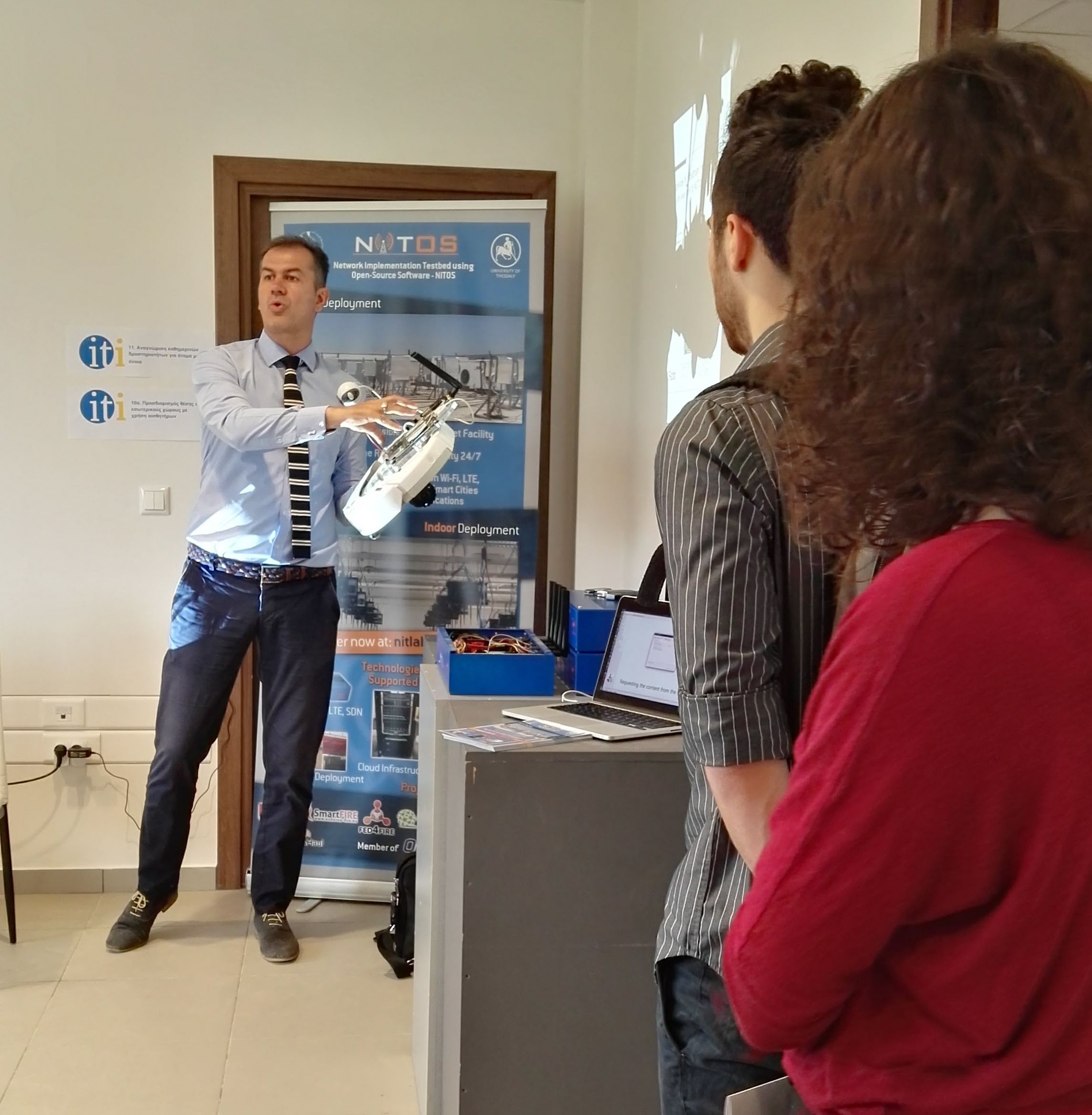
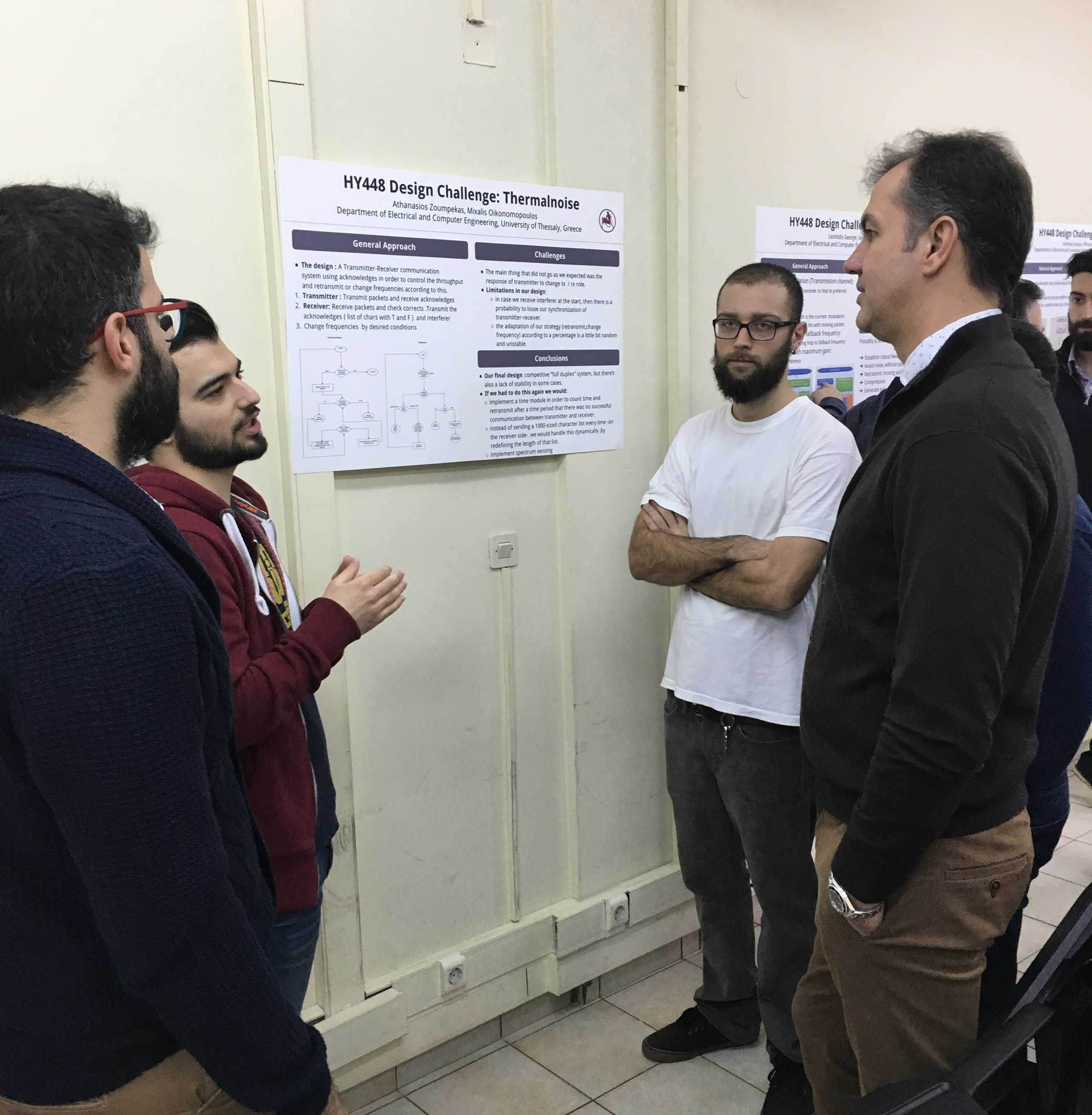

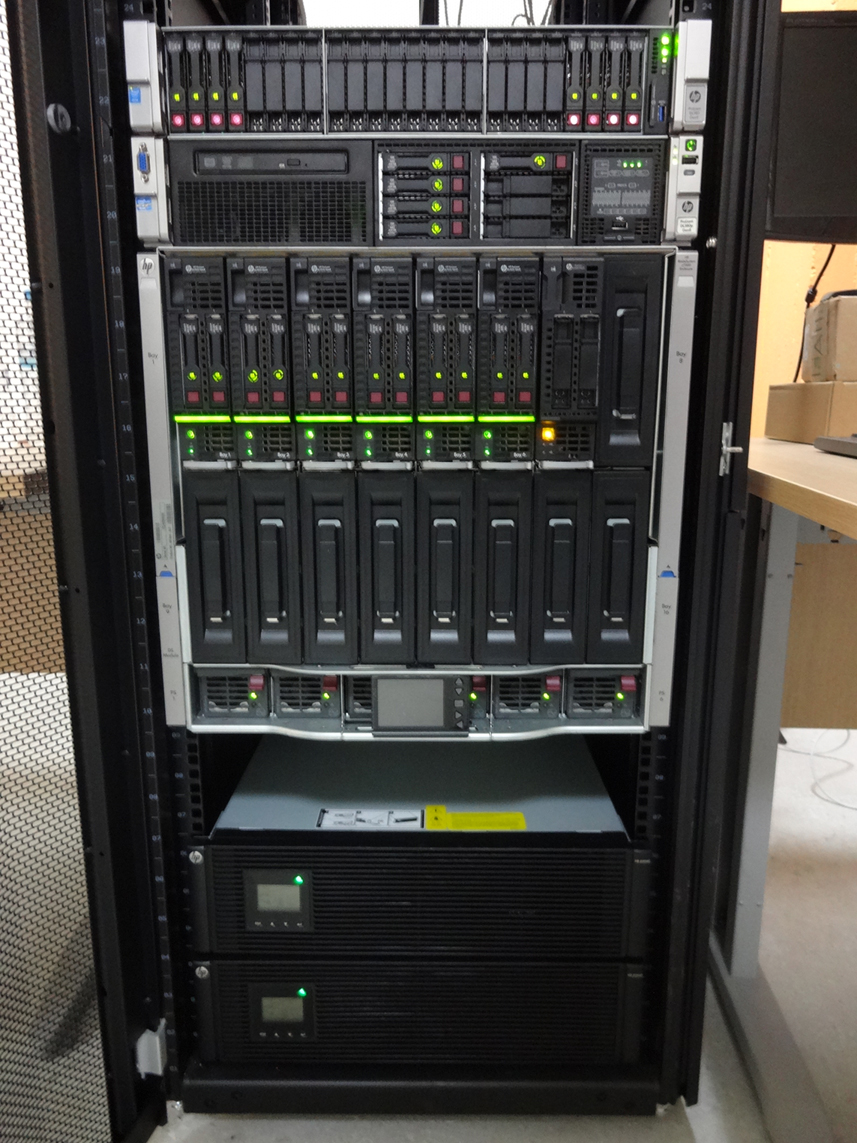 Each blade server has
Each blade server has